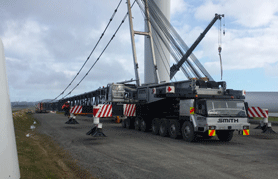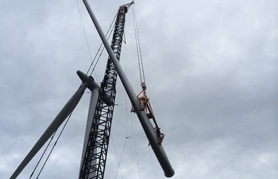


Wind turbines are subject to regular maintenance schedules. I have been involved with the maintenance of turbines located at Palmerston North, Wellington, Mossburn and Dunedin. With each turbine being around 60-80 metres tall, utilising the skills of experienced crane operators and their teams was essential. A selection of 200 to 500 tonne mobile cranes and crawlers was used to help change the rotor blades, bearings and gear boxes of these wind turbines.
A significant challenge was the logistical management required to move each crane between the individual turbines. Poor weather meant that the ground conditions were unfavourable, with boggy and muddy grounds throwing up plenty of issues to problem solve around.
As the turbines were already constructed, only the transport of replacement parts and equipment was required. This also required careful project management, as well as the actual set up of the cranes on site. Newer wind turbine models are often bigger than previous generations, requiring larger and more powerful crane types to be used. The remoteness of wind turbines also provides challenges in accessing the area with larger mobile crane types.
Thankfully the crane industry is responding well to these new requirements, with specifically designed, more powerful models being built.

